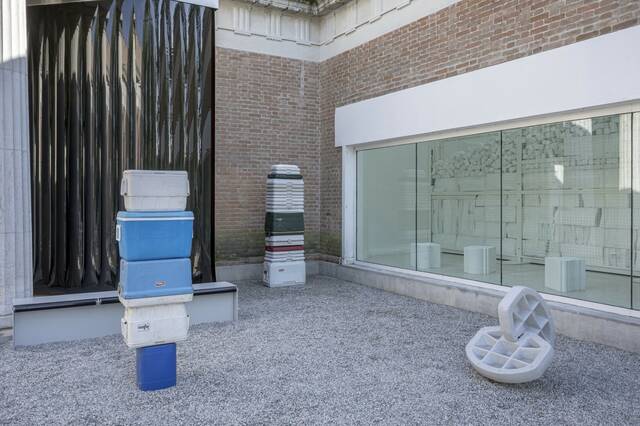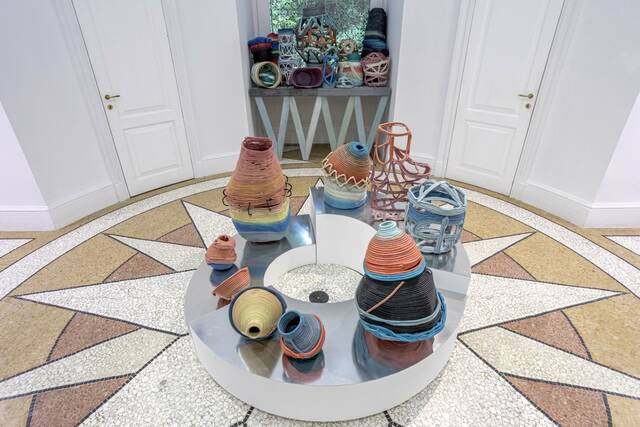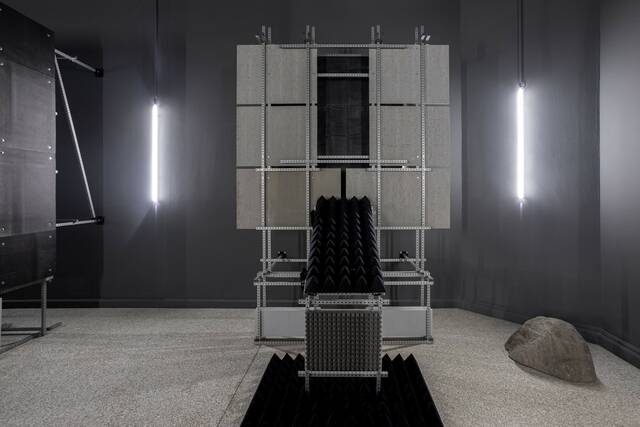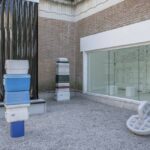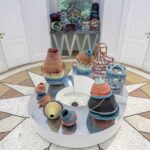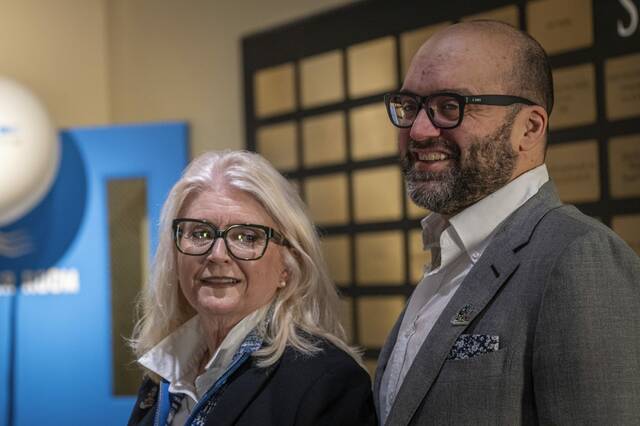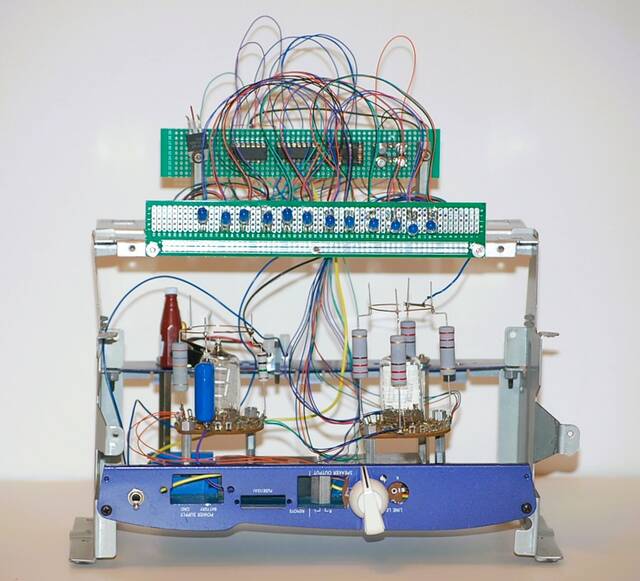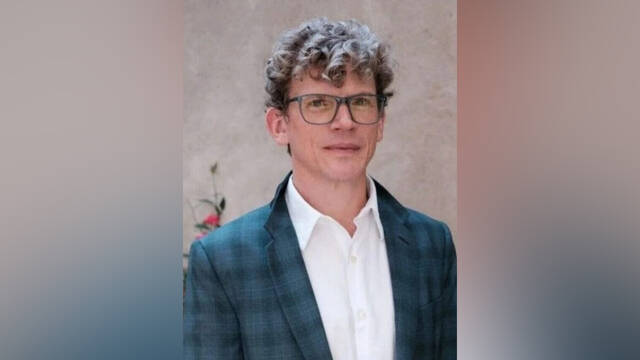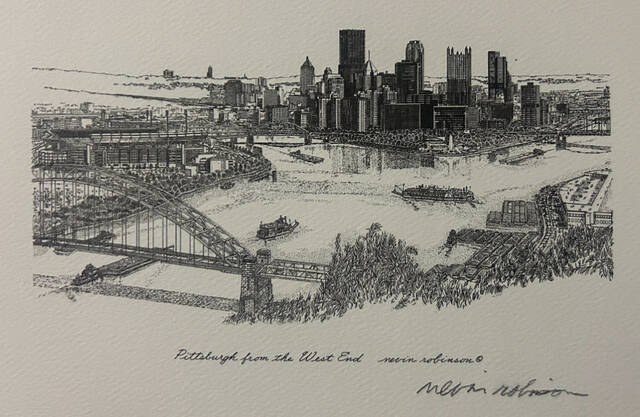The Carnegie Museum of Art has a new exhibition opening Saturday, and while the art is new to the space, its material will be familiar.
“Everlasting Plastics,” which opens March 9 in the Heinz Architectural Center at the Carnegie Museum in Oakland, is a walk-through exhibition that explores our relationship with one of the most common substances in our everyday lives.
Making its North American debut in Pittsburgh, “Everlasting Plastics” showcases the art of five contemporary artists, each in conversation with how plastic impacts our bodies, our environment and our relationships with each other. The exhibition is part of an ongoing series of exhibits by the Heinz Architecture Center to examine the built environment around us.
After its debut in 2023 at the U.S. Pavilion of the 18th Venice Biennale of Architecture, “Everlasting Plastics” comes to Pittsburgh, an especially poignant choice given the region’s industrial past.
“Part of the context is the history of extraction in the region,” said Theodossis Issaias, associate curator of Heinz Architectural Center. He and Alyssa Velazquez, assistant curator of decorative arts and design, organized the Carnegie Museum’s presentation of the exhibition.
The curators of the exhibit are Tizziana Baldenebro, curator of special projects at SPACES, and Lauren Leving, curator-at-large at the Museum of Contemporary Art Cleveland, with the support of assistant curator Paula Volpato.
“They really wanted to work with artists who could give different aspects of plastic as building material, as something that we associate with family gatherings, as something that we use on a day-to-day basis, as something that we might not see,” Velazquez said.
The five artists — Ang Li, Simon Anton, Lauren Yeager, Norman Teague and Xavi L. Aguirre — interpreted the common material in fascinating ways.
Ang Li, a trained architect, uses EPS foam in her pieces. The foam, which is used as insulation in architecture, is usually covered up by walls and structures, but Li brought it to the forefront.
“It’s asking you to confront and be faced with a product that, for the most part, is considered a building product,” Velazquez said. She noted that the installation is shining a light on the challenges of reuse and disposal when it comes to this material.
“We don’t have a magic wand to make all plastics disappear, so we have to find ways to think of how we live with plastics, ” Issaias said.
Lauren Yeager and Simon Anton’s pieces have been placed “in dialogue” with each other, and both utilize everyday items to showcase how, as Issaias puts it, “the mundane becomes monumental.”
“For Simon’s, he’s taking small plastics, like water bottles,” said Velazquez. Anton then shredded, combined and melted the plastics so that they could be grafted onto existing structures like crowd control gates. The result is a colorful statement about the future of these items.
“The conceit is that there could potentially be future civilizations who visit Earth in the distant millennia and these are still there. These would be fossils or landmarks of past cultures,” Velazquez said, noting that by adding plastic to the items, the artist is actually lengthening their lifespan.
Yaeger’s works are also striking. They are sculptures that play with everyday items — coolers, basketballs, plastic chairs — and position them as new artifacts out of context. “They link the culture of disposability and the domestic in a longer historical trajectory,” Issaias said.
Norman Teague, whose work is familiar to the Carnegie Museum of Art, had a residency at a plastic manufacturing company and developed a technique to melt down plastics into a “goo” that could be extruded and shaped. His installation is a series of molded containers and baskets, many woven in West African styles, which are made from ordinary household plastics like detergent containers. Each container is positioned on a long table that Issaias and Velazquez refer to both as “the conveyer belt” and “the landscape,” names that also reference the intersection between the natural and manufactured.
“For us, this duality is very important,” Issaias said.
The last artist’s space is an audiovisual presentation. Xavi L. Aguirre’s work examines the idea of “proofing” in architecture, how it is both to keep things in and keep them out, using the context of the queer nightclub scene as a way to convey these ideas.
“Everything is a little bit structured in a paradoxical way, everything fits and doesn’t fit,” Issaias said.
The presentation is in a three-minute loop and immerses the viewer in a cyclical journey through video and sound.
“Everlasting Plastics” is evocative and at times unsettling, but also hopeful. The art that the artists have produced has a lot to teach us.
“It’s about relationships with each other, relationships with our planet. It is scary to say that we are becoming plastic … plastic is found in our gut, in our food, in our oceans,” Issaias said. He added that we have to rethink our relationship with these materials.
Velazquez is encouraged by the fact that the art in the exhibition is not adding to the problem, but instead using existing plastics. “They’re utilizing the excessive waste … they’re essentially creating this interesting parallel of creative reuse and recycling.”
The Carnegie Museum of Art will host an opening celebration for “Everlasting Plastics” from 3 to 6 p.m. Saturday.
“All of the artists are here, three of them will be onstage, and they will explain their processes and dreams and hopes with this work,” Issaias said. Two of the artists, Simon Anton and Norman Teague, will participate in a hands-on workshop starting at 4 p.m.
“Everlasting Plastics” will be open to the public from March 9 to Aug. 11 at the Carnegie Museum of Art, Oakland.


